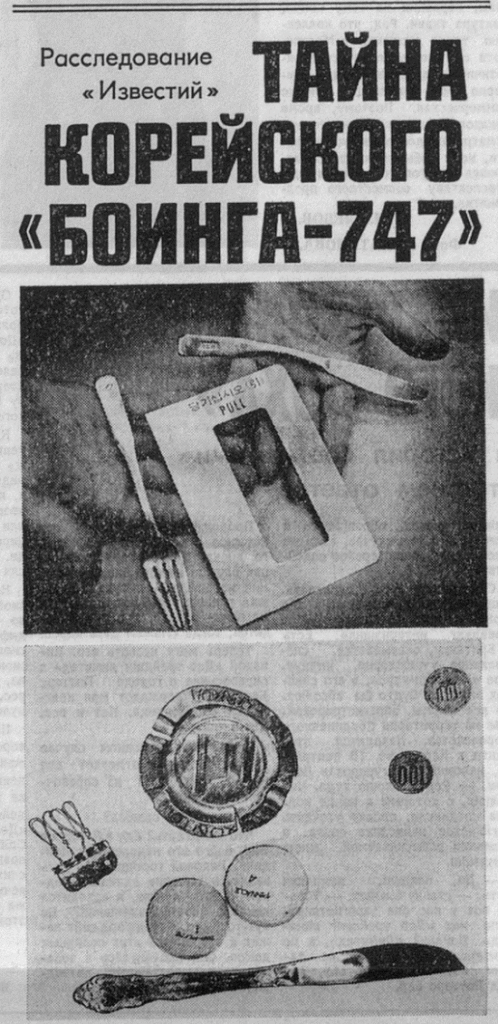In 1991 Japanese journalist RCC journalist Yoshio Sato from Hiroshima TV using a Russian submersible with Moscow’s permission obtained the following videos. The dive location was the official crash location of 46°33.533′N 141°19.683′E in approximately 50m water depth.
At the same location back in 1983 Russian divers had recovered articles from Korean airlines and these were published on 30th January 1991 in Izvestia as shown below

These videos and images were seen as proof that KAL007 had indeed crashed at this location. However, this was a decoy. To put it more clearly this was an empty plane simulating KAL007. The wreckage videos are of a 767 not a 747.
There are numerous points leading to this conclusion:-
- The Russians always referred to the crash at this location as “The Boeing”, not KAL007
- The Russian divers never found any bodies and suspected the plane was empty
- The DFDR recovered only has engine pressure data for 2 engines (not 4)
- A 10 meter section of wing was recovered but this was never shown but was destroyed.
- The logo from the engine cowl discovered has the Pratt and Whitney “Flying Pig”. This Logo was only used on engines manufactured after 1982. The 767 was the only Boeing aircraft manufactured between 1982 and 1983 using Pratt and Whitney engines.
- Documents retrieved from the bottom of the Sea of Japan near Moneron Island exist, as do “household items” in a wide, though strange assortment, as noted by the divers, but there are no people who used them
- If you recall, Osipovich (the Soviet interceptor pilot who shot down the aircraft) recounted that after takeoff, he flew toward the sea for 8 minutes, receiving guidance that the target was ahead and approaching head-on. The pilot didn’t find this target, turned around, took a reverse course, and then saw the target. So, one target was left behind him, and another appeared ahead? That means two targets?
- Osipovich reported in his interview that the second missile took off half the left wing. On a 747 the HF1 radio antenna is on the left wing but on the DFDR and radio communications to Narita ATC KAL007 was clearly communicating on HF1 AFTER the missile strike. A 767 has the HF antenna in the leading edge of the vertical tail stabiliser
